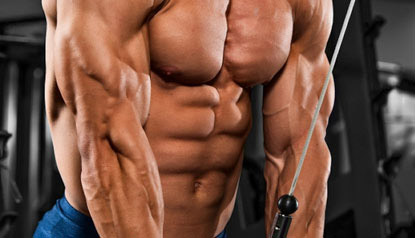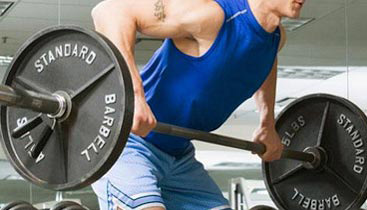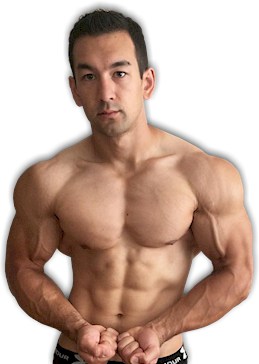ARM ISOLATION: IS DIRECT BICEP AND TRICEP WORK NECESSARY?

To train arms or not to train arms? Is arm isolation needed to build thick, muscular biceps and triceps?
Or is the stimulation these muscles receive on heavy presses, chin-ups, and rows sufficient to maximize your upper arm gains?
The answer here is pretty simple…
Assuming that muscular hypertrophy is your primary goal, yes, you should certainly include some direct arm work in your program.
Is this an absolutely crucial part of your training routine? Do you need direct arm work in order to build impressively large arms?
No. In fact, the majority of your bicep and tricep gains is going to come as a result of progressively overloading your big lifts. As in, consistently adding more weight to your heavy compound exercises for your chest, shoulders and back.
There’s no way to put an exact number on it, but I’d estimate that basic presses, chin-ups, and rows will probably account for somewhere between 75-90% of your total upper arm growth.

However, that’s the point of direct isolated arm work – to squeeze out that extra 10-25%.
Obviously it’s possible to build big arms without ever performing a single bicep curl or tricep extension, but I would assume that your goal here is to maximize your gains and achieve the very best arm development possible.
If this is the case, I can’t see any good reason to not include a few basic arm movements in your routine.
It only requires a few sets of a few basic exercises… it’s fun… and it isn’t going to eat into your overall recovery time in any significant way, as direct arm work is not very taxing on your central nervous system.
Sure, if you have a nagging elbow, wrist, or shoulder injury that is aggravated by direct arm work and the trade-off doesn’t seem worth it, go ahead and skip it.
If you’re an athlete or powerlifter whose only goal is to develop total body functional strength, don’t worry about it.
However, if you’re a bodybuilder, or just someone who wants to develop the best physique that they possibly can, curl and extension movements certainly have their place.
Just make sure that you don’t go overboard, and that you include your arm movements only after you’ve completed your basic compound lifts first. (Training biceps/triceps on their own dedicated day is an option too if you prefer it)
And again, keep it simple…
To fully stimulate the biceps, go with 2-3 sets of a basic palms up curl (such as a barbell curl or cable curl) followed by 2-3 sets of a supinating dumbbell curl for 5-7 reps reach. You can optionally include 2-3 sets of a reverse curl as well (barbell or cable) to hit the brachioradialis (the upper portion of your forearm), using a rep range of 8-10.
For triceps, start with 2-3 sets of a close-grip bench press for 5-7 reps (this exercise is optional however, since you’ll already have several compound pressing exercises included in your routine for chest and shoulders), followed by 2-3 sets of 5-7 reps on the tricep pressdown. Finish things off with 2-3 sets of an overhead dumbbell extension (one handed or two handed) for 8 to 10 reps.
There are of course many different ways to lay out an effective arm routine, but this is a great template to follow.
That’s really all there is to it.
Sure, direct arm training may only account for a smaller portion of your total bicep and tricep gains in comparison to the basic compound lifts, but that doesn’t make it unnecessary or a waste of time.
If you want to optimize your arm development and achieve the very best results possible, treat your curls and extensions the same way you would any other lift by hitting them with good focus and intensity and consistently adding weight to the bar over time.
If you found this article helpful, make sure to sign up for your FREE custom fitness plan below...




